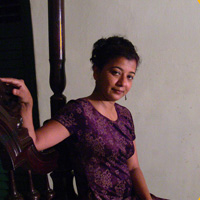Meaning of the word ‘Gallery’:
A room or building for display or sale of works of arts
Collection of pictures
A balcony in theatre and also in bungalows
A long passage
The first time when I visited Bombay as an artist I saw every nook and corner has an art gallery and was impressed till I was told; “Idiot all are not art galleries! All kinds of exotic shops are also called ‘Gallery’”. In Bombay we have lacs of them. Today I am still wondering the difference between a shop that sells artifacts and paintings and a gallery? I am sure there is a difference, in the aesthetic sense but might not be in a commercial sense.

Now the questions asked are how do you enter the gallery circuit?
I just say it’s very easy, show your work.
But then who is showing you? How does that matter? Or does it matter who are you or which college or who recommends you?
It is almost like showing your passport or identity –
What is your father/mother’s name? Where were you born? When did you come to this earth? When will you expire?
What is your longevity in this field?
This is a very valid question.
15 years back for a female artist the first question was; “Are you married? If yes, how many kids? If not then when will you marry?”
“Let us wait for 5 years and check your marital status or are you continuing with your artwork?” but the galleries knew that a male artist will surely continue…
And then next question was: “Marrying an artist or non-artist?”
These terms define the longevity for a female artist. But I assume these hardly matter today? What matters most is the economy, USP, ability to perform in your work and in the social circuit.
I remember Kekoo Gandhy telling me how he encouraged the Bombay Progressives, who used to come to his framing shop and he would display their works on the shop window. The window overlooked the road and had an access to the public. How has that changed to be more exclusive and to a limited audience? Most of the galleries now-a-days we see, can only be entered when one rings the door bell, so is that similar to a private house, then does it still remain a gallery? If I see it as commercial space then yes it is, but again the old argument; “What about the visibility to the public?” Do we as visual artists only target 200 audience and is that the criteria?
Of course as I said it is an old argument, gallerists will differ by saying, anybody can walk in by just pressing the bell. In reality, a glass door shoos away the passerby so how do you think she/he will press that bell. Now do you also want to control the audience access -who should see and who shouldn’t? Anyways we have moral police all around!
My question to the artists in today’s time is that what do we target – commercial success or visibility? The artist too have an audience in mind and many or I should say most of them target that limited 200 audience and most of the 200 people come on the opening day and rest of the days the shows are always lonely.
If I look at today’s spaces and professionalism within the gallery circuit especially within India, it is quite wide and open. But still the white cube is in demand. There could be an experimental space either an existing warehouse or industrial space or a remake of a warehouse but still it somehow seeks resemblance from a white cube vis-à-vis the concept. How and why the colonial thought of a white cube never becomes a black space? Why even today artists are unable to go beyond thinking of the white cube? Does a public space break the notion of a white cube? Can we think beyond the post-colonial and make a very third world identity; a very Asian identity or a non-international identity that doesn’t mean exotic, but it means self-identity not inherited or borrowed. But does that mean searching for your own roots, which reminds me of changing of names of the city or its identity. I am sure that is not the solution.
Construction of thoughts comes to my mind when I look at different kinds of structures, and to make it as local as it could be. As an artist if I have to install my work then I always like to create my own space within the space assigned to me, either public or white cube. However, you may try, escaping the white cube is an impossible task in today’s era. I hope in the next decade or so we can see the shift.














